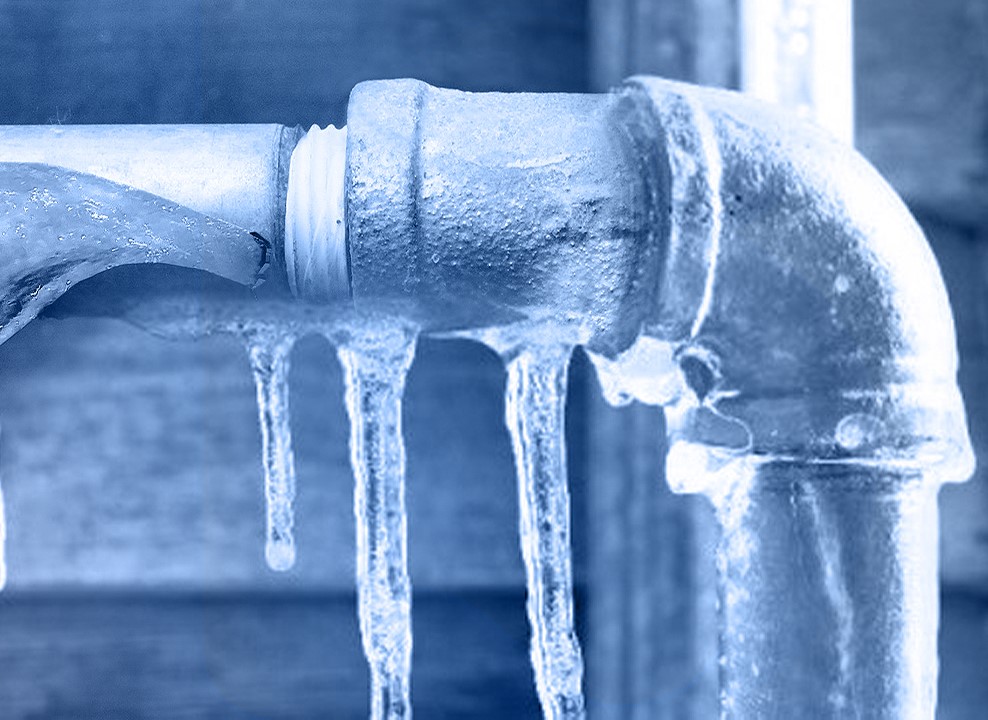They are making a number of good pointers about Helpful Tips to Prevent Frozen Pipes this Winter overall in this content just below.

Cold weather can wreak havoc on your pipes, especially by freezing pipes. Here's just how to avoid it from happening and what to do if it does.
Intro
As temperatures decline, the danger of frozen pipelines increases, possibly resulting in pricey repair work and water damages. Comprehending just how to prevent frozen pipes is critical for homeowners in chilly environments.
Prevention Tips
Protecting vulnerable pipes
Cover pipes in insulation sleeves or use warm tape to safeguard them from freezing temperatures. Concentrate on pipelines in unheated or outside locations of the home.
Home heating techniques
Keep indoor areas properly heated, especially locations with plumbing. Open cupboard doors to enable warm air to circulate around pipes under sinks.
Just how to identify frozen pipelines
Seek lowered water circulation from faucets, unusual smells or noises from pipes, and visible frost on exposed pipelines.
Long-Term Solutions
Structural adjustments
Consider rerouting pipelines away from outside walls or unheated locations. Add extra insulation to attic rooms, cellars, and crawl spaces.
Upgrading insulation
Purchase premium insulation for pipelines, attics, and wall surfaces. Proper insulation assists maintain constant temperatures and lowers the risk of frozen pipelines.
Protecting Outside Pipes
Yard hose pipes and outside faucets
Separate and drain yard hose pipes before wintertime. Mount frost-proof faucets or cover outside taps with shielded caps.
Recognizing Frozen Pipes
What creates pipes to freeze?
Pipes freeze when subjected to temperature levels below 32 ° F (0 ° C) for prolonged periods. As water inside the pipes freezes, it expands, putting pressure on the pipe wall surfaces and possibly triggering them to rupture.
Risks and damages
Frozen pipes can bring about water system interruptions, property damages, and costly repair work. Ruptured pipelines can flood homes and create comprehensive architectural damages.
Indications of Frozen Pipes
Determining icy pipes early can stop them from bursting.
What to Do If Your Pipelines Freeze
Immediate actions to take
If you suspect icy pipelines, maintain faucets available to relieve pressure as the ice thaws. Make use of a hairdryer or towels soaked in hot water to thaw pipes gradually.
Verdict
Stopping icy pipelines calls for aggressive measures and quick reactions. By comprehending the reasons, indications, and safety nets, house owners can secure their pipes during cold weather.
5 Ways to Prevent Frozen Pipes
Drain Outdoor Faucets and Disconnect Hoses
First, close the shut-off valve that controls the flow of water in the pipe to your outdoor faucet. Then, head outside to disconnect and drain your hose and open the outdoor faucet to allow the water to completely drain out of the line. Turn off the faucet when done. Finally, head back to the shut-off valve and drain the remaining water inside the pipe into a bucket or container. Additionally, if you have a home irrigation system, you should consider hiring an expert to clear the system of water each year.
Insulate Pipes
One of the best and most cost-effective methods for preventing frozen water pipes is to wrap your pipes with insulation. This is especially important for areas in your home that aren’t exposed to heat, such as an attic. We suggest using foam sleeves, which can typically be found at your local hardware store.
Keep Heat Running at 65
Your pipes are located inside your walls, and the temperature there is much colder than the rest of the house. To prevent your pipes from freezing, The Insurance Information Institute suggests that you keep your home heated to at least 65 degrees, even when traveling. You may want to invest in smart devices that can keep an eye on the temperature in your home while you’re away.
Leave Water Dripping
Moving water — even a small trickle — can prevent ice from forming inside your pipes. When freezing temps are imminent, start a drip of water from all faucets that serve exposed pipes. Leaving a few faucets running will also help relieve pressure inside the pipes and help prevent a rupture if the water inside freezes.
Open Cupboard Doors
Warm your kitchen and bathroom pipes by opening cupboards and vanities. You should also leave your interior doors ajar to help warm air circulate evenly throughout your home.

I was brought to that editorial about 6 Ways to Prevent Frozen Pipes from a friend on another blog. Are you aware of somebody else who is in the market for the subject? Take a moment to share it. Thank you for taking the time to read it.
Book